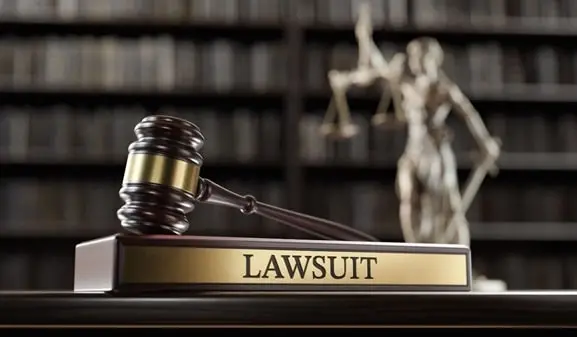The use of Aqueous Film-Forming Foam (AFFF) in firefighting, particularly within military operations, has come under intense scrutiny due to its association with serious health risks, notably various forms of cancer. Lawsuits against manufacturers and users of AFFF, including the U.S. Navy, have surged in recent years as awareness of the toxic per- and polyfluoroalkyl substances (PFAS) contained in these foams grows. This article delves into the ongoing legal battles, the health implications of AFFF exposure, and the responses from the Navy and other stakeholders.
Understanding AFFF and PFAS
AFFF is a firefighting foam widely used for extinguishing flammable liquid fires, particularly in aviation and military settings. It is effective due to its ability to form a film over burning fuel, cutting off oxygen and extinguishing the flames. However, AFFF contains PFAS, chemicals known as “forever chemicals” because they do not break down easily in the environment. PFAS exposure has been linked to numerous health problems, including kidney cancer, testicular cancer, liver damage, and developmental issues in fetuses.
Recent Developments in AFFF Lawsuits
- Surge in Lawsuits: As of October 2024, the total number of AFFF lawsuits has surged to nearly 10,000, reflecting growing awareness of the risks associated with PFAS exposure. Many of these lawsuits involve individuals who have worked with or around AFFF, including military personnel and firefighters, who allege that their health has been severely compromised due to this exposure.
- Health Studies and Findings: Recent studies continue to link AFFF exposure to serious health conditions. For example, a study revealed significant PFAS contamination in water supplies near military bases, with corresponding high levels of these chemicals found in the blood of local residents. The Department of Veterans Affairs is investigating potential links between PFAS exposure and various health conditions, which could lead to designating some diseases as presumptive service-connected conditions for veterans, thus facilitating easier access to healthcare benefits.
- Major Settlements and Ongoing Litigation: The legal landscape surrounding AFFF is marked by significant settlements. Notably, a $10.3 billion settlement was reached by 3M to resolve claims related to PFAS contamination in drinking water, which does not directly affect personal injury cases but indicates the increasing accountability of manufacturers. Other manufacturers, including DuPont and Chemours, have also faced substantial claims and settlements related to their AFFF products.
- Navy’s Response and Legal Standing: The U.S. Navy has faced scrutiny for its use of AFFF, especially given the historical reliance on these products for firefighting on ships and at airfields. While the Navy is now transitioning away from using AFFF, the legal implications of past usage remain. Victims are filing lawsuits against the Navy, alleging negligence in the management of hazardous materials and failure to warn service members about the risks associated with AFFF exposure.
Legal Implications and Future Outlook
The ongoing AFFF litigation represents a significant challenge for both the military and chemical manufacturers. The complex nature of the cases, involving both personal injury claims and environmental contamination, complicates the legal landscape.
- Increased Awareness and Legal Action: As awareness of PFAS and their health impacts grows, more individuals affected by AFFF are likely to come forward. Legal experts anticipate that the number of lawsuits will continue to rise, as new health studies validate the claims of those suffering from AFFF-related illnesses.
- Potential for Legislative Changes: In response to the AFFF crisis, some states are beginning to implement legislation aimed at regulating the use of PFAS. For instance, Massachusetts has proposed a bill to phase out PFAS-containing firefighting gear by 2027. Such legislative changes may influence the outcomes of current lawsuits and the strategies of manufacturers and the military.
- Settlements and Compensation: For plaintiffs in AFFF lawsuits, the pursuit of compensation for medical expenses, lost wages, and pain and suffering remains a central focus. Legal teams are preparing for potential bellwether trials, which may set precedents for future settlements.
Conclusion
The AFFF lawsuits against the Navy and manufacturers of firefighting foam underscore a critical intersection of public health, environmental law, and corporate accountability. As litigation continues to evolve, both the Navy and chemical manufacturers will need to navigate a complex web of legal challenges, health implications, and public scrutiny. The outcomes of these lawsuits will not only affect those directly involved but also set significant precedents for handling toxic exposure cases in the future.


